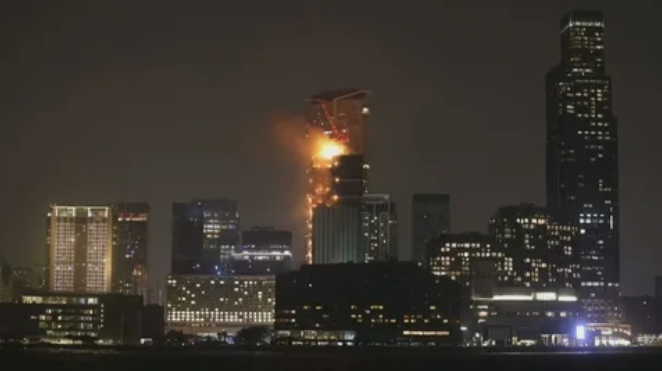High-rise buildings present unique challenges when it comes to fire evacuation. Their towering structures and complex layouts require careful planning and execution to ensure the safety of occupants. One crucial aspect of this planning is obtaining an Emergency Lighting Certificate, which ensures that all emergency lighting systems are compliant with safety standards. In this blog, we will explore these challenges and discuss strategies to address them effectively.
The Complexity of High-Rise Evacuation
High-rise buildings often exceed several stories in height, which introduces significant complexity to fire evacuation procedures. One of the primary challenges is the sheer volume of people that need to be safely evacuated. Unlike low-rise structures, high-rise buildings can house hundreds, if not thousands, of occupants. Coordinating an evacuation in such a setting requires meticulous planning and well-designed systems.
Another issue is the building’s vertical nature. Traditional evacuation methods, such as staircases, become more complicated when they extend over many floors. The longer the descent, the greater the risk of fatigue, panic, and congestion among evacuees. Additionally, elevators, which are commonly used in high-rise buildings, are generally not an option during a fire due to the risk of malfunction or entrapment.
Fire Safety Systems in High-Rise Buildings
To address these challenges, high-rise buildings are equipped with advanced fire safety systems that are crucial for high-rise building emergency evacuation. These systems play a key role in managing evacuation efforts and ensuring the safety of occupants. One important system is the fire alarm system, which alerts occupants to the presence of smoke or fire. Modern systems are designed to provide clear, audible alerts and guide people toward safe exit routes. Another key component is the building’s smoke control system, which helps manage and contain smoke, allowing for safer evacuation routes and reducing the risk of smoke inhalation. Fire-resistant building materials and design also contribute to a safer evacuation. High-rise buildings are often constructed with materials that resist fire and prevent it from spreading quickly. Additionally, fire doors and barriers are strategically placed to compartmentalize the building and limit the spread of smoke and flames.
Evacuation Planning and Drills
One of the most immediate and dangerous risks posed by aging gas pipelines is the potential for Natural gas is highly flammable, and even a small leak can lead to catastrophic consequences if it comes into contact with an ignition source. In densely populated urban areas, the risk is amplified due to the proximity of buildings, vehicles, and people.
Gas leaks can occur for various reasons, including corrosion, ground movement, and damage from construction activities. When a gas leak occurs, it not only poses a risk of explosion but also releases harmful pollutants into the atmosphere, contributing to air quality issues. In some cases, gas leaks can go undetected for extended periods, increasing the likelihood of a disaster.
The dangers of gas leaks are not limited to explosions. Even low-level leaks can pose serious health risks to residents in urban areas. Prolonged exposure to natural gas can cause symptoms such as headaches, dizziness, nausea, and respiratory problems. In extreme cases, it can lead to carbon monoxide poisoning, which is potentially fatal.
Addressing Special Needs
High-rise buildings often accommodate a diverse group of occupants, including individuals with special needs. Addressing these needs is a critical aspect of evacuation planning. Elevators, which are typically disabled during a fire, may be essential for people with mobility impairments. Therefore, building plans must include alternative methods for assisting these individuals.
Fire safety personnel should be trained to assist occupants with special needs and to operate equipment designed for their evacuation. For instance, evacuation chairs can be used to help people with mobility issues safely navigate staircases. Ensuring that these tools are readily available and that staff are trained in their use is essential for a successful evacuation.
The Role of Technology in Evacuation
Advancements in technology are playing an increasingly important for high-rise buildings. Modern buildings often incorporate sophisticated systems that enhance evacuation efficiency and safety.
One such technology is the use of building management systems (BMS) that integrate various safety features. A BMS can monitor fire alarms, control smoke vents, and manage emergency lighting. This integration allows for a coordinated response to fire emergencies and can help guide occupants to safety.
Additionally, digital signage and communication systems can provide real-time information to occupants during an evacuation. These systems can display exit routes, provide updates on the status of the fire, and offer instructions on what to do. This real-time communication is crucial for keeping occupants informed and reducing panic.
The Importance of Ongoing Training and Review
Ensuring the safety of occupants in high-rise buildings requires ongoing training and review. Building managers and safety personnel must stay updated on the latest fire safety regulations and best practices. Regular training sessions help keep staff prepared to handle emergencies and ensure that evacuation plans are up-to-date.
Building occupants should also be educated about fire safety procedures. Informational materials, such as brochures and posters, can help raise awareness and provide essential information about evacuation routes and procedures. Conducting periodic fire drills for occupants can further reinforce this knowledge and improve overall preparedness.
Conclusion
Evacuating high-rise buildings during a fire presents unique challenges that require careful planning and execution. From managing large volumes of people to addressing the specific needs of different occupants, the complexities of high-rise evacuation demand a comprehensive approach. Advanced fire safety systems, effective planning, and ongoing training all play crucial roles in ensuring a successful evacuation. By addressing these challenges proactively and leveraging modern technologies, we can enhance the safety and preparedness of high-rise buildings, ultimately protecting the lives of those who live and work in these towering structures, If you want to stay updated with posts like this, please follow us on Magazine Times.


